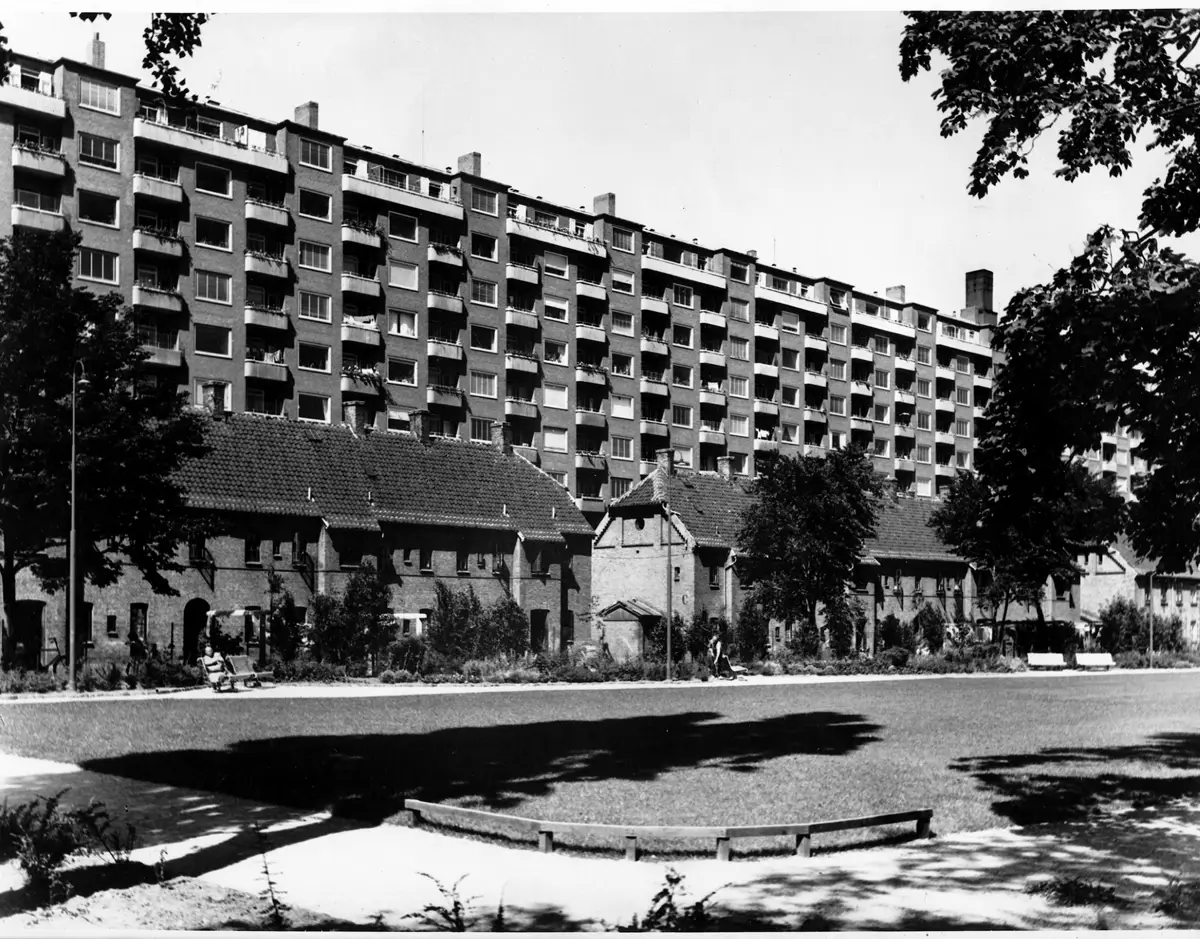
From past to present: Travel back in time at two M3 line metro stations
This article has been created in collaboration with the Copenhagen Museum. Thank you for bringing history to life.
Worker housing at Aksel Møllers Have
The Aksel Møllers Have metro station is located right in the middle of one of the city's green oases, where the cosy park is surrounded by some of Denmark's first ‘skyscrapers’: the modern high-rise buildings from the 1930s by construction magnate Guld-Haralds.
In the historical photo from 1949, you can see in the foreground a few of the last remaining houses from De Classenske Boliger, which were created in the wake of the 19th century epidemics caused by cramped and unhygienic living conditions in the inner city slums.
These were the state-of-the-art workers' homes of the time, with shops, laundry facilities and a kindergarten, built by the Classen Fideikommis so that the working class could improve their standard of living. At the time, Frederiksberg, with its open countryside and high ceilings, was the ideal location for modern, healthy construction.
Around 1900, they began to fall into disrepair, but for many years you could still see the remains of the Classen homes, until the last ones disappeared in 1959.


Marmorkirken: From ruin to icon
The Marmorkirken metro station takes you directly up to... Marmorkirken, which with its distinctive copper-green dome and beautiful marble must be one of the most impressive churches in the city.
Construction was started by Frederik V in 1749 and took almost 150 years to complete. In the historic photo from the late 1800s, we are right where the Marmorkirken is today, but instead of the familiar landmark, we are standing in the middle of a ruin.
The church was consecrated in 1894, and thanks to industrialist C.F. Tietgen, the magnificent dome of the Marmorkirken stands today as a striking silhouette in the Copenhagen skyline.


Experiences with the Metro
Did you see it too?